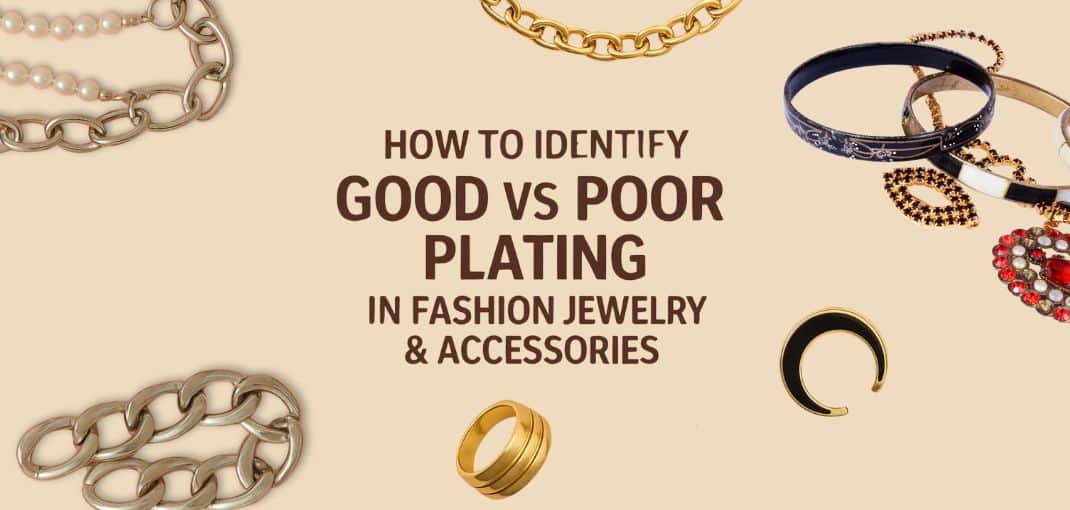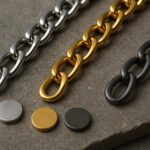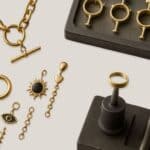Plating is one of the most important elements in fashion jewelry and accessories. It determines how long a piece lasts, how premium it looks, and how satisfied the customer feels after wearing it.
But most people, including manufacturers, buyers, and consumers, struggle to differentiate good plating from poor plating.
This guide will break down exactly what makes plating superior, what warning signs to avoid, and how you can make smarter decisions as a buyer or brand.
At Yunova Lifestyle, where we plate thousands of pieces across brass, stainless steel, and zinc, plating quality is the core of our manufacturing process. Here’s everything you need to know.
1. What Does Plating Mean in Jewelry?
Plating is the process of applying a thin layer of metal such as gold, rhodium, silver, gunmetal, or PVD coating on top of a base metal like brass, zinc, copper, or stainless steel.
High-quality plating ensures:
✔ Long-lasting shine
✔ Better resistance to sweat and water
✔ Tarnish-free performance
✔ Skin safety
✔ A premium finish
Poor plating results in:
✘ Color fading
✘ Blackening
✘ Peeling
✘ Allergies
✘ Dull appearance
Understanding plating helps you judge whether a piece of jewelry is truly worth its price.
2. Signs of GOOD Plating in Fashion Jewelry
✔ 1. Even and Uniform Color
A properly plated piece has a consistent shade with no dark patches, streaks, or uneven tones.
✔ 2. Smooth, Glossy, and High-Polish Surface
Premium plating always appears smooth, polished, and reflective.
This means the metal beneath was polished perfectly before plating.
✔ 3. No Visible Lines, Scratches, or Brush Marks
If polishing is weak, plating will reveal flaws.
Good plating = flawless pre-polish + proper finishing.
✔ 4. Sweat & Water Resistance
High-quality plating withstands:
•Daily wear
•Moisture
•Humidity
•Perfume exposure
This is achieved through cleaning, strike layers, and sealants.
✔ 5. No Peeling or Flaking
Quality plating bonds strongly to the base metal.
If the plating chips easily, the process was not done properly.
✔ 6. Passes the Sweat & Rub Test
Premium plating remains intact even after:
•Rubbing with cloth
•Wearing overnight
•Contact with sweat
Yunova conducts these tests internally for QC.
✔ 7. Protective Sealant / Anti-Tarnish Coating
A final lacquer layer improves plating life dramatically.
3. Signs of POOR Plating (What to Avoid)
✘ 1. Quick Fading of Color
If the color turns dull or silverish within a few uses, the plating is thin or chemically weak.
✘ 2. Skin Turning Green or Itchy
This indicates:
•No barrier layer
•Poor quality chemicals
•No anti-tarnish seal
✘ 3. Dull or Cloudy Finish
Low-grade plating appears chalky or lifeless.
✘ 4. Visible Scratches Beneath Plating
Improper polishing results in visible defects even under gold or rhodium.
✘ 5. Peeling or Chipping at Edges
The biggest sign of defective plating, the metal is not properly bonded.
✘ 6. Dark Spots or Uneven Shades
Occurs when plating thickness varies across the piece.
4. Types of High-Quality Plating (What You Should Look For)
A. Flash Plating (Basic)
A thin layer of gold or rhodium.
Used for budget-friendly jewelry. Limited durability.
B. Micron Plating (Premium)
Thickness between 0.3–1.0 microns.
Ideal for premium, daily-wear, and long-lasting jewelry.
C. PVD Coating (Top-Tier & Ultra Durable)
A vacuum process used in luxury accessories and watches.
Extremely durable, waterproof, and scratch-resistant.
Best for stainless steel jewelry and modular accessories.
D. Nickel-Free Barrier Layer Plating (Copper + Palladium + Gold)
Since nickel is banned/restricted in many countries (EU/REACH, UK, Middle East, etc.), high-quality manufacturers use nickel-free plating systems.
This includes:
•Copper layer for adhesion
•Palladium layer as a hypoallergenic barrier
•Gold/Rhodium layer for final appearance
Benefits:
✔ Hypoallergenic
✔ Strong adhesion
✔ No peeling or blackening
✔ Approved for global exports
✔ Excellent corrosion resistance
This is now the industry standard for premium and sensitive-skin jewelry.
5. Simple Tests to Identify Good Plating
These tests can be done by anyone — even without tools.
✔ 1. Rub Test
Rub gently with a cloth for 20–30 seconds.
Good plating should remain unchanged.
✔ 2. Sweat Test
Touch with slightly sweaty fingers or wear overnight.
Premium plating will not fade.
✔ 3. Nail Scratch Test
Lightly scratch an edge — plating should not peel.
✔ 4. Humidity/Water Drop Test
A water droplet should sit without staining the surface.
✔ 5. Weight & Density Check (for Steel)
High-quality plated steel feels more solid.
6. How Yunova Lifestyle Ensures Superior Plating
At Yunova Lifestyle, every plated piece goes through a multi-step, controlled, modern plating process, including:
✔ Ultrasonic and electro-cleaning
✔ Acid activation
✔ Nickel-free barrier layering (palladium)
✔ High-quality gold/rhodium baths
✔ Sealant and anti-tarnish coating
✔ Friction and wear tests
✔ 24–48 hr sweat testing
✔ XRF micron thickness check
This ensures:
•Color longevity
•Skin safety
•Export compliance
•Scratch resistance
•Premium finish for every order
7. Conclusion: Why Plating Quality Matters More Than Ever
Good plating doesn’t just make jewelry look premium, it determines how long it will last and how satisfied users will be.
High-quality plating ensures:
✔ Long life
✔ Shine retention
✔ Skin safety
✔ Superior customer experience
Poor plating leads to:
✘ Returns
✘ Complaints
✘ Bad reviews
✘ Damage to brand reputation
Whether you are a brand, retailer, or consumer, knowing how to evaluate plating helps you choose better jewelry and therefore a better manufacturer.
Yunova Lifestyle ensures globally compliant, long-lasting plating quality for every piece we produce.





